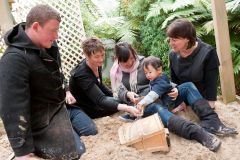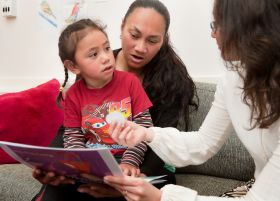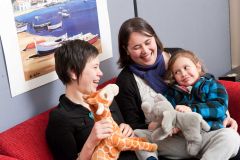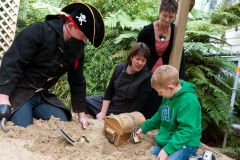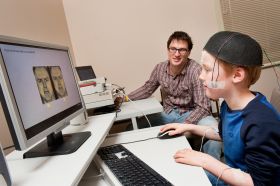Something that we have all experienced is that when we retrieve one memory, often other memories that share similar features also come to mind. For example, recalling one nerve-racking experience can cue the retrieval of other nerve-racking experiences that occurred years before, and after, the event that you were initially trying to remember. This memory association allows humans to benefit from prior experience.
How and when does memory association develop during the infancy period? In a series of experiments with 6-, 12-, and 18-month-old infants, we showed that when two events occurred together—one event that was extremely memorable and one event that was not—retrieving the memory for the memorable event cued retrieval of the less memorable event, extending the retention of it. We taught infants two tasks within the same experimental session; the deferred imitation (DI) task is typically remembered longer than the visual recognition memory (VRM) task. In the DI task, infants watched an adult perform a series of 3 actions with a grey mouse or rabbit puppet. In the VRM task, infants are shown a picture for a specific period of time. After a delay, infants are given the opportunity to look at the familiar picture or a new one and we record the amount of time that they spend looking at each one. Given infants' inherent interest in novelty, we assume that if they remember the familiar picture, then they will choose to look at the novel one when both are presented together.
We found that, at all ages, retrieval of the DI memory facilitated retrieval of the VRM memory, but the conditions under which this spreading activation occurred changed as a function of age. For 18-month-olds, the mere retrieval of the longer-lived DI task was sufficient to prolong retention of the shorter-lived VRM task for at least 1 week. Twelve and 6-month-olds, on the other hand, required additional training to make the DI memory stronger; 12-month-olds remembered the VRM task when they were given an opportunity to practice the DI target actions after watching the DI demonstration and 6-month-olds remembered the VRM task only after we doubled the number of demonstration and practice sessions. We conclude that retention in the VRM task was prolonged via its association with the deferred imitation task. That is, the shorter-lasting memory “piggybacked” onto the longer-lasting memory.
This finding suggests that memory association is a powerful means of prolonging the retention of information that otherwise might be forgotten quickly.
